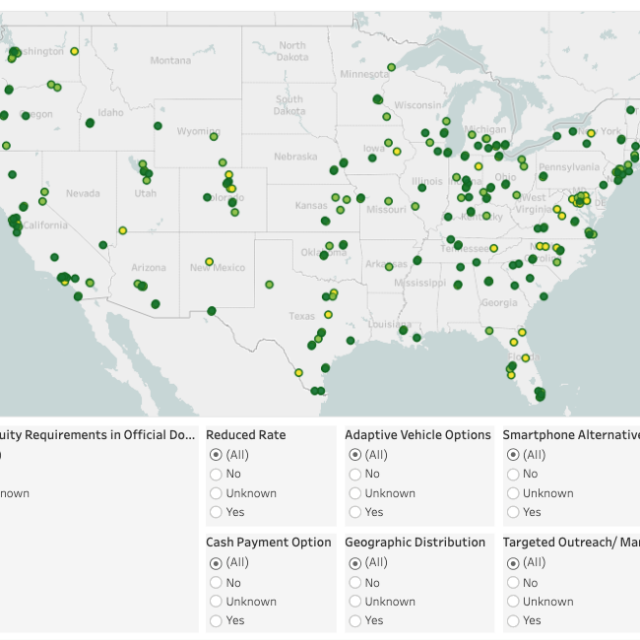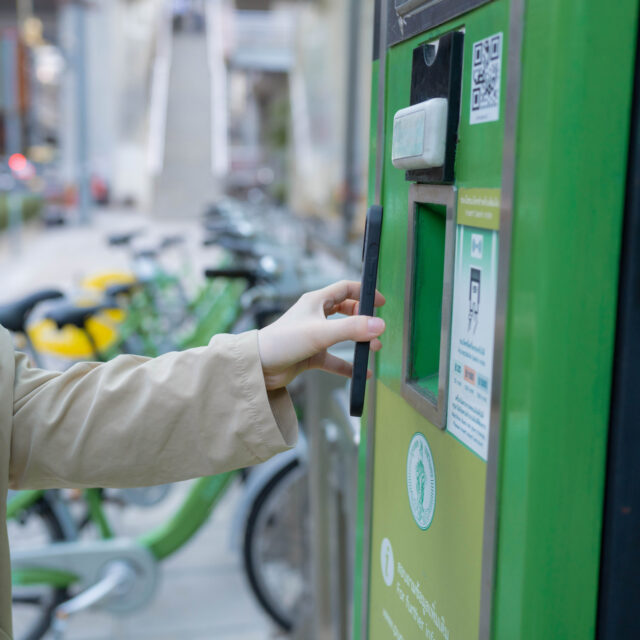1 in 4 U.S. Adults Suffers From Transportation Insecurity
by Kiran Herbert, Communications Manager
October 3, 2022
New research uses a novel measurement tool to quantify the prevalence of transportation insecurity in the United States.
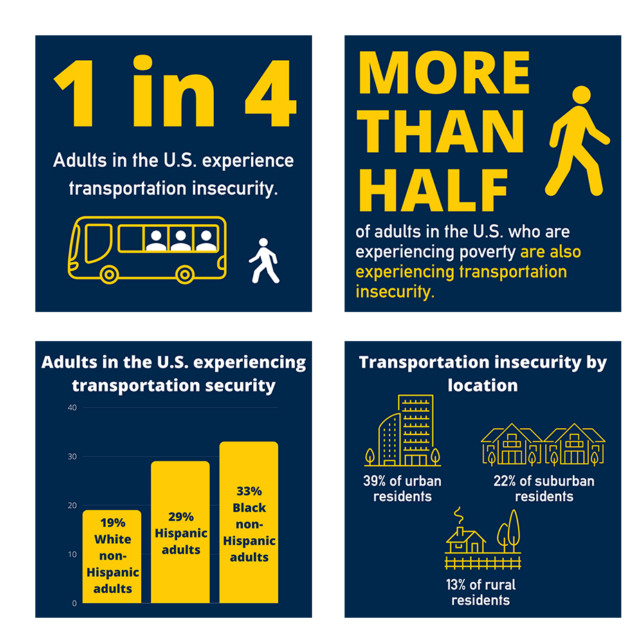
Transportation insecurity, or the condition of lacking the necessary resources for transportation, is an issue with a far-reaching impact. After all, if a person isn’t able to regularly move in a safe or timely manner, they might not be able to get to a job, take their children to school, show up to doctor’s appointments, or even bring home groceries. Until recently, however, it’s been hard to quantify just how many people in the United States experience transportation insecurity — and without concrete data, the issue can be hard to address.
This month, a team from the University of Michigan published research that sheds light on the prevalence of transportation insecurity in the U.S. The new findings, titled “Transportation Insecurity in the United States: A Descriptive Portrait,” utilize a new Transportation Security Index developed by the researchers. The first-of-its-kind tool offers a validated measure of transportation security and provides insight into the demographics of who’s experiencing it.
Modeled after the Global Food Security Index, the Transporation Security Index is a 16-question survey that focuses on the symptoms — rather than attempting to catalog the innumerable causes — of transportation insecurity. An example of a symptom would be someone needing to constantly reschedule appointments for lack of transportation, or a person needing to take unreasonable amounts of time to plan and execute everyday tasks.
In 2018, researchers administered the Transportation Security Index questionnaire to a nationally representative sample of 1,999 adults aged 25 and older in the United States. The research team found that one in four U.S. adults suffers from transportation insecurity and that more than half of those facing poverty are also undergoing transportation insecurity. They also discovered that of those experiencing transportation insecurity, 19% are white, 29% are Hispanic, and 33% are Black. By location, 39% reside in urban areas, 22% are suburban residents, and 13% are located in rural areas. The results also found that car ownership and transportation insecurity aren’t as correlated as one might assume — car owners are not immune from transportation insecurity, likely because of the costs associated with gas, insurance, and maintenance, as well as the need to share one car amongst many household members.

Researchers compiled the index based on 187 interviews and ethnographic observations, painting a vivid picture of the lived experiences of Americans undergoing transportation insecurity. The index has been designed so that respondents can be categorized on a spectrum, either using a continuous score representing their level of transportation insecurity or sub-groupings such as “no insecurity” or insecurity that is “marginal,” “low,” “moderate,” or “high.”
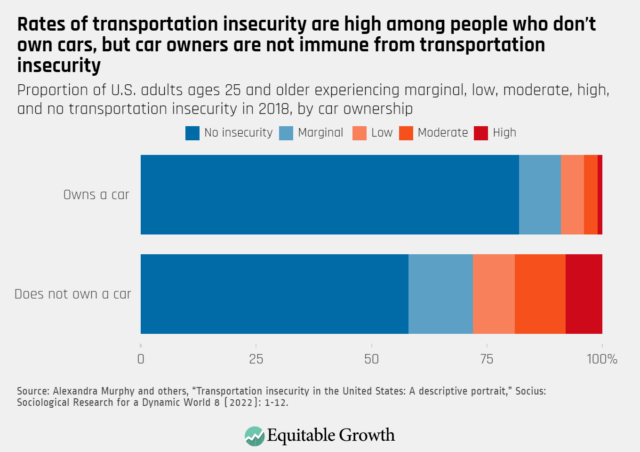
The researchers extrapolated on the data, highlighting a vicious cycle in the U.S. in which systemic inequities — discrimination in our education system, financial systems, labor market, and city planning — leads BIPOC to have fewer resources to access adequate transportation. It’s cyclical because that transportation insecurity then prevents those same populations from accessing other economic opportunities that might help better their circumstances.
The research team included several use cases for the Transportation Security Index:
- Evaluating transportation interventions (e.g. providing free bus passes or ride-sharing vouchers) pre- and post-intervention to determine whether such interventions are moving people from transportation insecurity to transportation security or, conversely, whether they are exacerbating existing disparities. Such evaluations can help determine which interventions perform best across different geographies and help planners and policymakers understand which interventions yield the most return on investment.
- Documenting the prevalence of transportation insecurity and tracking it over time on reoccurring, nationally representative surveys to see whether disparities are widening or closing, how disparities change with shifts in the geography of poverty, and how new transportation technologies (e.g. autonomous vehicles) impact rates of transportation insecurity. This could also be done at the regional level.
- Identifying geographic “hotspots” where people experiencing transportation insecurity spatially cluster to decide how (and where) to allocate resources, including mobility interventions (e.g. new transit routes and stops, transit vouchers) and social services.
- Screening patients or clients during intake for social services to identify whether they are experiencing transportation insecurity and in need of transportation-related assistance.
The use cases highlight how the index could likewise serve those involved in planning bike share systems, from where stations should go to who should receive discounted services to how effective certain community outreach methods are. Equitably built bike share systems, especially those that connect with transit systems and offer low-income programs, can help fill in transportation gaps and alleviate transportation inequity. While bike share is a less feasible solution in suburban and rural environments, there’s still plenty of room for improvement amongst urban systems.
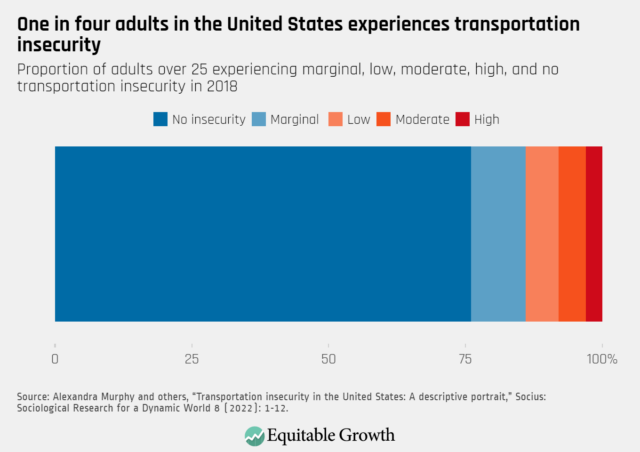
More research is needed to identify more sustainable solutions, and to determine how things have changed since the pandemic. Additional insight into how transportation inequity affects participation in the labor market, school attendance, access to healthcare, and buying patterns will also help make both a social and economic case for change. The hope is that more data will help guide new policies, as well as assess their impacts on those that need it most.
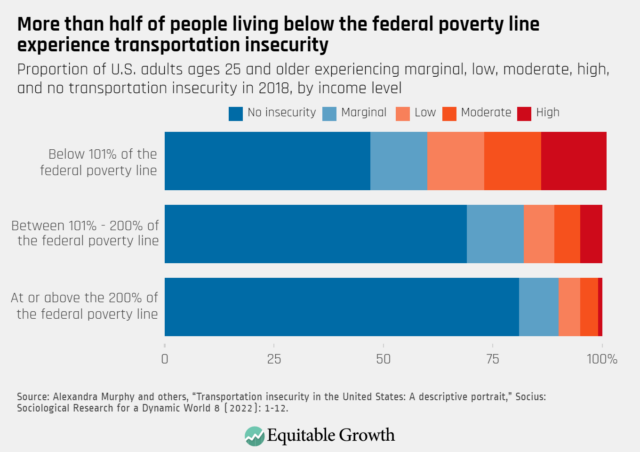
Thanks to this work, we can now speak to exactly how widespread transportation insecurity is and, hopefully, planners and other researchers can now use the index to help chart a path forward. It’s a long-awaited first step towards acknowledging transportation as a fundamental American right — without it, it can be hard to simply live, let alone flourish.
The Better Bike Share Partnership is funded by The JPB Foundation as a collaboration between the City of Philadelphia, the National Association of City Transportation Officials (NACTO) and the PeopleForBikes Foundation to build equitable and replicable bike share systems. Follow us on Facebook, Twitter and Instagram or sign up for our weekly newsletter. Got a question or a story idea? Email kiran@peopleforbikes.org.

